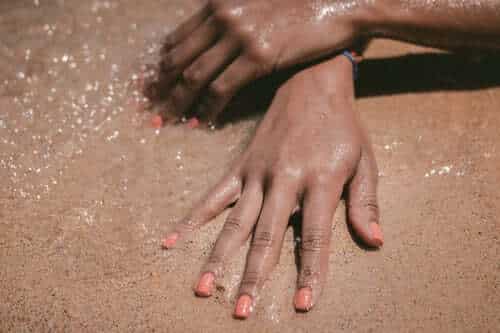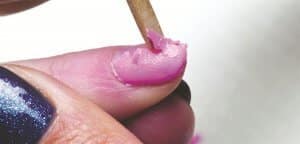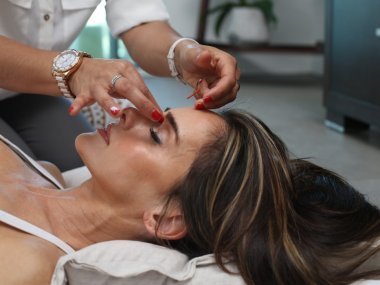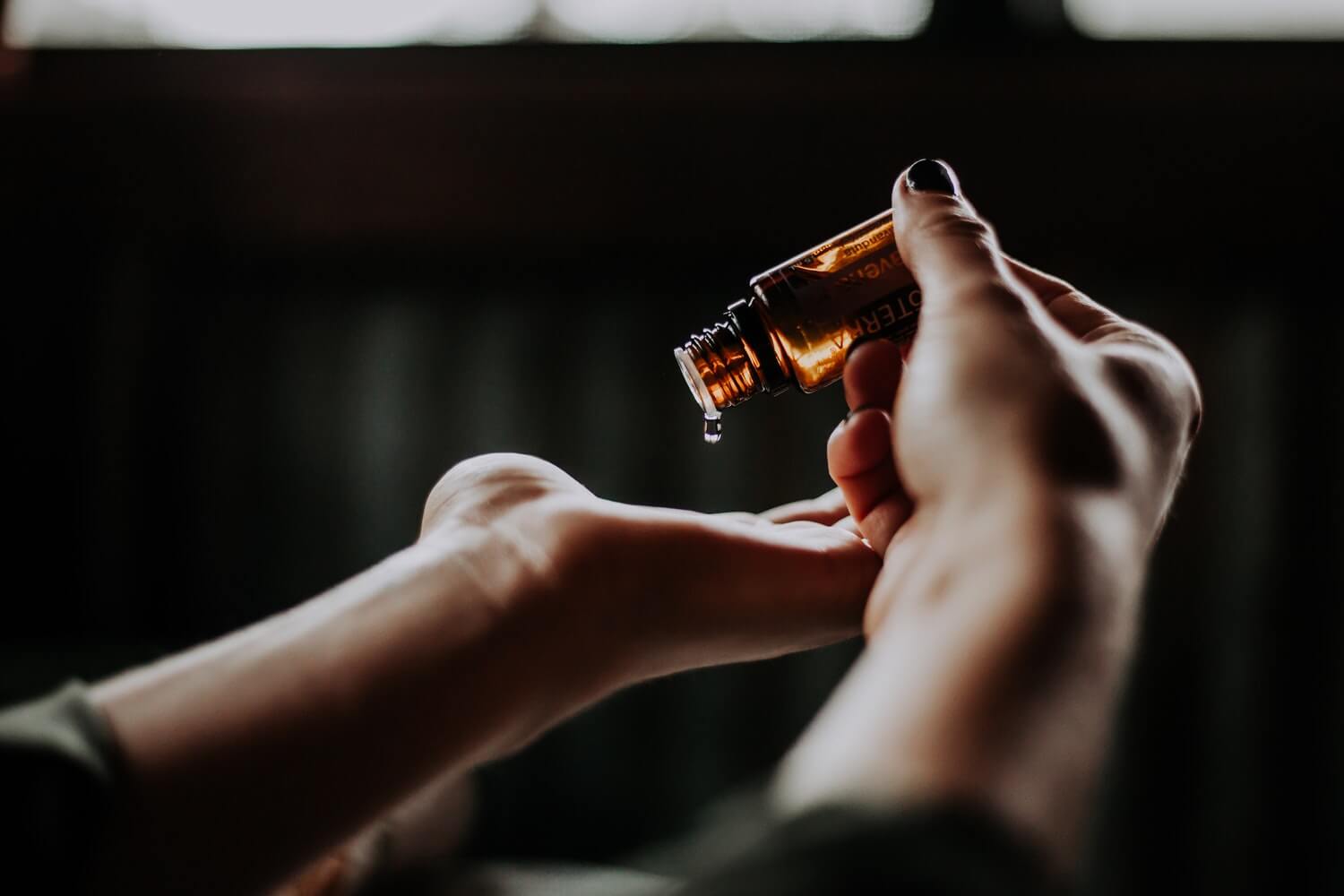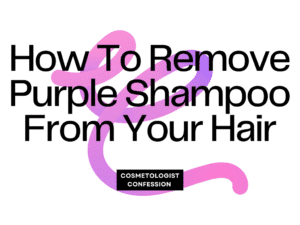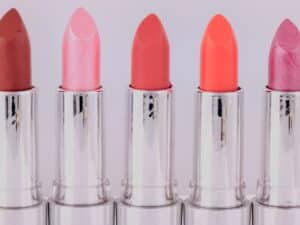While I was changing in the gym today I overheard two girls discussing their nails. I’m not sure what part of their conversation baffled me more. The fact that they were no longer returning to the nail salon because of their soak off method or how misinformed they were about each soak off method itself. It was the first time in my life I wanted to insert myself into someone’s conversation.
It took me a second to realize that not everyone is like myself; who has their cosmetology license and working as a nail tech for many years taught me the ins and outs of all things nails. I forget all women aren’t born with superhuman knowledge of all things beauty. I’m just kidding, but seriously, I know my shit so keep reading.
Manicures, pedicures and overall nail health is so important and today I realized women are clueless. Don’t be like these two girls at the gym and leave your favorite nail place because you are misinformed and not educated in the field. Read on and learn something new today, so you don’t have to browse yelp for your new nail joint!
[su_divider divider_color=”#fcbde8″ size=”6″]Contents
Why are there so many soak off methods?
Depending on what you are trying to soak off is going to determine what soak off method is best for you. Standard acetone-free remover is going to be less drying and you are going to want to use that when you can. Obviously, it isn’t universal and you can’t use it for all polishes, gels, shellacs or acrylic.
Related Article: Not Your Mothers Blonde! Check Out The Blonde Toning Shampoo Seen All Over Instagram! Click Here To Read Now!
What is the difference between acetone-free and acetone nail polish remover?
Without giving you a full-on chemistry lesson, I’ll break it down for you. Acetone has more chemicals in it which is going to be better and work faster to take the polish off your nails but is going to dry out your skin more. Acetone-free polish still has chemicals to take the polish off but won’t be as harsh.
The semi-chemical reason behind nail polish remover is the following. Any nail polish remover is going to have an ethyl acetate base. Acetone nail polish remover is going to be an organic compound which has an additional isopropyl alcohol compound.
Nail polish product types vs brand names:
Knowing what nail polish remover to use is based on the knowledge of what polish you have on your nails. With so many names for brands, colors, products, and services it can get confusing on what is what.
A no-chip manicure is THE SAME THING as a gel color or a shellac manicure. No-chip is the product type itself and gel color/shellac are the brand’s given name for it, more or less. Think of it as Soda being the product and Pepsi/Coke being two brands of soda. Get it? Each nail polish brand is just the given name from its parent company (OPI, CND, Gelish etc).
The same is true for daily polish and week wear polish. Vinylux is the brand name give by CND for its week wear line, and OPI Infinite Shine is the brand name given by OPI for their week wear line.
What type of acetone is suggested for each polish?
- Normal nail polish- polish that needs drying for at least 30 min – use acetone-free remover
- Week wear polish – polish that drys quickly but still without a lamp- can typically use acetone-free remover or acetone depending on the brand. Dark colors should use 100% acetone!
- Color gel, shellac or any type of no-chip – polish cured under a lamp- use acetone remover, it will not come off otherwise
- Acrylic or gel- typically adds length to your nails with a tip – use acetone remover
Important – If you are doing this at home, you want to get a 100% acetone remover! Don’t get one that isn’t 100% acetone or it will take twice as long to remove your polish thus damaging your nails and unnecessarily drying out your skin.
Additionally, don’t confuse rubbing alcohol for nail polish remover. After listening to those two girls talk today I feel that yes, I do need to address this. Nail polish remover and rubbing alcohol are in no way the same, and rubbing alcohol will do nothing to remove your polish. If you have seen your nail tech use rubbing alcohol it is to set professional no-chip polish and this action takes the layer of stick off.
[su_divider divider_color=”#fcbde8″ size=”6″]Related Article: Advanced Hair Color Shampoo And Conditioner! Recommended By Professional Stylists and Cosmetologists.
[su_divider divider_color=”#fcbde8″ size=”6″]If my polish is peeling or sticking up can’t I just peel it off?
I don’t know how many different ways I can answer this but No, Nope, Don’t even think about it and absolutely not. Peeling off any type of polish is going to remove the top layer of your nail leaving behind a weak and damaged nail.
Damaged nails = unhealthy nails = peeled nails = ugly nails
Compare it to when you cut yourself and get a scab. Are you going to peel the scab off? NO, you leave it on to protect and grow the skin underneath. This is what the top layer of your nails does.
Once the damage is done to the top layer of your nail, it can take a long time and some serious love to repair your nail back to a fully healthy state.
[su_divider divider_color=”#fcbde8″ size=”6″]How to remove gel nails without acetone?
My professional advice is you don’t! Again, simple answer without going into chemistry is gel nails, no-chip and acrylic are all results of different chemical reactions coming together. This means certain chemical reactions need to again happen with products to remove the polish from your nails.
If you absolutely are looking for an answer or you are thinking you will just tear the polish off, then here is my advice. DO NOT buff your nails. Instead, soak them in oil and rub sugar around your nails and cuticles. Getting moisture under the polish is going to be your end goal here.
Now go wash and dry your hands. Next, take a wooden stick or flat end of a cuticle pusher, and start making small back and forth movements under the polish. Do this by starting at the tip of your nail, the bottom of your nail or side. Pour more oil under the polish as it lifts up. Essentially you’re looking for the polish to come up in one long sheet.
This should not be a clean task. Oil should be everywhere or you are probably just peeling the polish off your nails in strips and taking layers with you.
My favorite cuticle oil is hands down CND! You can find it with this link here!
[su_divider divider_color=”#fcbde8″ size=”6″]Soak Off Method To Remove Polish
Soak off method is pretty much an acetone bath for your nails. As a nail tech, I always tried to stay away from this method. Submerging large amounts of skin is going to make any area submerged into the acetone, dry. Dry cuticles surrounded by dry skin is just a disaster waiting to happen. In winter you are just asking for your fingers to crack and bleed with this method.
The only time I would perform a soak off method is if the no-chip polish is really stuck on there. In this case, I would dry the hand every five to ten minutes, use a file to rebuff the nail and continue soaking. If you are going somewhere that uses a drill or large amounts of time having you soak your hands, I suggest going elsewhere. A little soaking time is understandable but a long period isn’t. Keep that in mind when going to your next nail appointment.
If you prefer the soak off method after everything I have told you I suggest using oil weekly to keep your cuticles nourished. Finish with a moisturizing lotion to keep the surrounding skin areas moist and they should help prevent irritated skin.
[su_divider divider_color=”#fcbde8″ size=”6″]Foil Method To Remove Polish
This is my preferred choice to remove any type of polish. Foil method is clean, efficient and works the fastest out of all removal methods. With this method your nail is buffed, then a cotton ball soaked in acetone is placed over your nail and then wrapped in tin foil.
The tin foil acts as a clean little boat to keep the liquid on your nail and nowhere else. It also acts as an oven making the removal time go faster. Salons will typically do the foil method to benefit themselves and the clients because it really is a win-win all around.
If you haven’t already been asking, make sure you ask your nail techs to soak your nails off while you get a pedicure. It will save you time and you can still use your fingers to flip through magazines or use your phone. If you can’t use your hands while you are in foil, they are most likely wrapping them improperly and I suggest going somewhere else. Wrapping foil to remove polish is a basic nail tech skill and if they can’t do that properly I bet you have issues with your cuticles or polish lifting. Let me guess, they told you it’s the nail brand and not their fault? They have no idea why your no-chip didn’t last the full two weeks and started chipping off. Classic rookie move.
If you plan on doing this yourself at home, make sure you are buffing your nails with a proper buffer or you won’t be buffing off the top coat. Buffing the top coat off slightly is what allows the acetone to be able to penetrate down into the polish so it can be removed.
I suggest using a buffer nail file and not a buffer block. Unless you are trained or are used to buffer blocks, you may end up cutting your skin as you buff. No fingers should be harmed in the removal of the beauty process. If you are a beauty pro, go ahead and use whichever you feel comfortable with.
[su_divider divider_color=”#fcbde8″ size=”6″]Using Cotton To Remove Nail Polish
Honestly, this parts going to be short. The only time you are going to use classic cotton and non-acetone nail polish remover is if you are wearing plain jane, standard nail polish in a light color. Even standard dark liquor colors are typically going to want to be taken off with a remover that has some acetone in it. Unless you have time on your hands, you are almost always going to use an acetone nail polish.
There are many wipes, pads and towelette type products on the market you can look into for standard nail liquor remover. However, you can always count on cotton and acetone nail polish remover to be your best friend and first go to.
[su_divider divider_color=”#fcbde8″ size=”6″]Nail Tips N Tricks I Use To Use Weekly That Can Be Used At Home
If you are looking to give your nails a break from polish, I suggest using some sort of conditioning nail polish in between color cycles. OPI has great ones that help strengthen your nails and helps fill in cracks or grooves you are currently trying to fix. I used this on almost all of my clients.
- OPI Nail Envy Nail Strengthener- made with calcium and protein that helps repair your nails to aid in nail growth and strength. Can be used as a stand-alone treatment or as a basecoat. I suggest using this as more of a stand-alone treatment between nails.
- OPI Natural Nail Strengthener – Unlike the one above, this will help strengthen and protect your nails. This can be used as a stand-alone treatment or as a basecoat. I suggest using this one as more of a basecoat. Can also be used to help prevent yellowing of the nails if you aren’t one to typically take breaks from color cycles.
No chip health trick: You can also use a bonding liquor coat when using no-chip polish at home. Bonders help fill in cracks and grooves so you have an even surface to start painting your color on. Applying a bonder can also help your color stay on your nail better by acting as an additional sticky component.
Mixing brand trick: Right off the bat, I am going to suggest getting CND or OPI to use as your base coat and top coat for all no-chip manicures. CND is a bit tricky and not my favorite to apply vs OPI which is more smooth and easy to put on, but they both can act as universal top and base coats. After the base coat is cured simply take a small makeup brush and swipe over the base coat. This action allows you to use any type of no chip color with CND or OPI base and top coats.
Example: OPI no-chip base + Morgan Taylor
Additionally, if you are looking for a matte or a shiny finish, make sure you get a top coat that is matte or shiny. They will be labeled and it will be life changing for you.
Not my favorite no-chip brands: Gelish and CND are absolute garbage no-chip colors. They seem to thicken quickly in the tube and unless applied by a professional will look uber bulky on your nail. A good no-chip manicure should be thinner and people shouldn’t be able to tell it’s a no-chip polish.
Finishing trick: Remeber to always wipe off a no-chip manicure with 100# isopropyl alcohol and not anything less. Every nail tech does this trick to set your no-chip so it’s dry and hard instantly.
[su_divider divider_color=”#fcbde8″ size=”6″]Conclusion
I hope I have cleared up a few nail salon FAQ’s that you may not have known. Nail techs and cosmetologists need to go to school for a reason, and now you probably understand why! If you have any other questions or any inquiries on certain brands to get, feel free to ask!
Anything underlined in the post will take you directly to a link where you can view and purchase the product!
